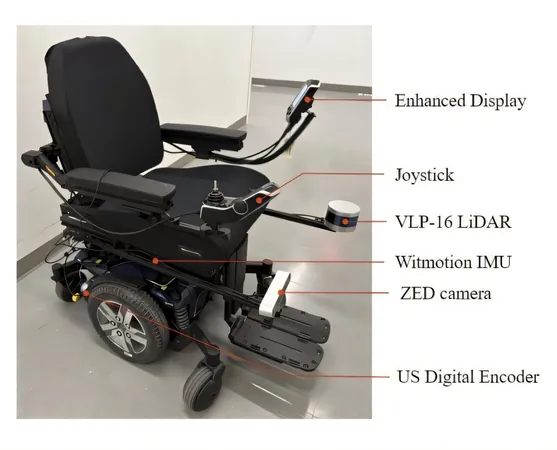
Revolutionizing Mobility: Merging Autonomy and Manual Control for Wheelchair Users
2025-04-21
Author: Wei
A New Era for Wheelchair Users
Imagine a world where wheelchair users can travel effortlessly, navigating through tight spaces and bustling crowds without lifting a finger. Autonomous technology is stepping in to take this vision closer to reality, enabling users to move from Point A to Point B without the constant need for manual control. However, trust remains a significant barrier; people tend to rely more on human drivers than on computers. That’s where the latest innovation from the University of Michigan comes in.
Shared Control: The Perfect Balance
Researchers are developing a groundbreaking system that combines the conveniences of autonomy with the user control of traditional wheelchairs. Many current mobility devices are either fully manual or completely autonomous, creating an unmet need for a middle ground. By harnessing cutting-edge LiDAR sensors and advanced cameras, the researchers aim to grant users freedom while ensuring they can intervene whenever necessary.
Vineet Kamat, a professor of civil and environmental engineering at U-M, explains, "The sweet spot is something we call 'shared control' or 'shared autonomy,' where the robot assists you as much as you wish, ensuring that the user always maintains control over their journey." This approach addresses the desire of individuals with disabilities to retain their independence while navigating complex environments.
Breaking Barriers to Social Engagement
For many wheelchair users, the daunting task of steering through crowd-heavy areas can deter them from engaging in social or professional activities. In the United States alone, approximately 2.7 million people rely on wheelchairs due to health-related issues each year. This innovation aims to change that by making mobility safer and more accessible.
The Revolution in Development
Professor Carol Menassa and Kamat have been pioneers in integrating robotics into everyday environments for years. Their latest project aims to equip a motorized wheelchair with state-of-the-art sensors that allow shared control via a video game controller. The ongoing experiments take place in North Campus's G.G. Brown Building, where volunteers test the CoNav system's capabilities.
User Trust: The Key to Adoption
Trust plays a crucial role in the acceptance of autonomous technology. Menassa states, "You want to be assured of your safety, along with the safety of those around you." The collaboration with J.D. Power reveals a trend in declining consumer confidence in fully automated vehicles, further emphasizing the need for systems where users can maintain control.
Next Steps: Testing with Real Users
As technical validations progress, the research team, including graduate and undergraduate students, will begin testing the system with individuals with disabilities. This crucial phase will redefine mobility for countless users, allowing them to navigate their world like never before.

 Brasil (PT)
Brasil (PT)
 Canada (EN)
Canada (EN)
 Chile (ES)
Chile (ES)
 Česko (CS)
Česko (CS)
 대한민국 (KO)
대한민국 (KO)
 España (ES)
España (ES)
 France (FR)
France (FR)
 Hong Kong (EN)
Hong Kong (EN)
 Italia (IT)
Italia (IT)
 日本 (JA)
日本 (JA)
 Magyarország (HU)
Magyarország (HU)
 Norge (NO)
Norge (NO)
 Polska (PL)
Polska (PL)
 Schweiz (DE)
Schweiz (DE)
 Singapore (EN)
Singapore (EN)
 Sverige (SV)
Sverige (SV)
 Suomi (FI)
Suomi (FI)
 Türkiye (TR)
Türkiye (TR)
 الإمارات العربية المتحدة (AR)
الإمارات العربية المتحدة (AR)